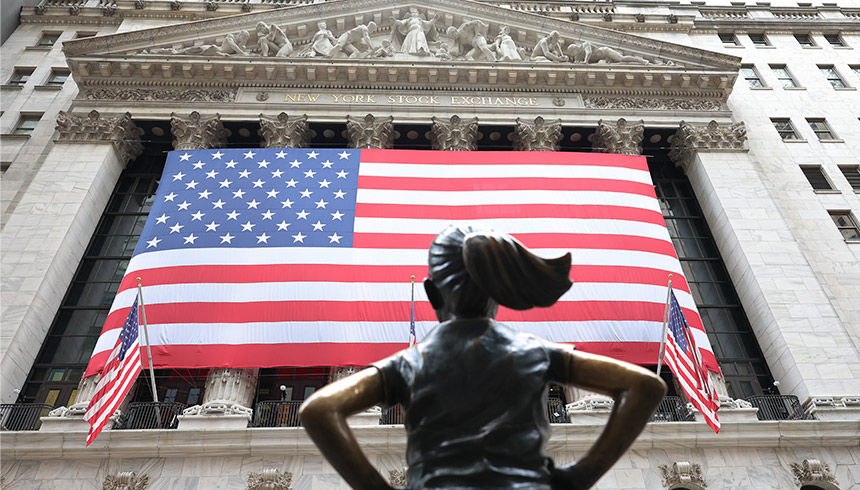U.S.-Asia Business
How Mexico’s Maquiladora Program Can Help During the US-China Trade War
By

Mexico’s maquiladoras can be effective tools for navigating US-China tariffs.
The U.S.-China trade war has wrought uncertainty not just to the U.S. and Chinese economies, but to the global economy. President Donald Trump has so far levied tariffs on over $360 billion worth of Chinese goods, which could increase to include 15 or 30 percent tariffs on $550 billion worth of goods by the end of 2019. Beijing has retaliated with their own tariffs on $75 billion worth of American products. Escalating tensions have led to further threats of increased tariffs from both sides, and U.S. business groups now say that the fallout from the trade war will affect both workers and consumers.
With many U.S. businesses looking for other options, some are looking to Mexico’s IMMEX maquiladora program as a possible solution to mitigate tariff woes. A maquiladora, also known as maquila, is a foreign-owned factory located in Mexico, usually near the United States border, that doesn’t have to pay duties on imported materials. Combined with preferential tax treatment from the Mexican government, lower labor costs and faster and cheaper transportation to the U.S., maquiladoras could be a useful and cost-saving alternative for companies affected by President Trump’s China tariffs.
“U.S. companies are on-shoring more production to Mexico as a result of many factors, including tariffs and climbing labor rates in China,” says Jeff Matthews, senior vice president of commercial banking and lending at East West Bank. “As companies make this transition, they are still sourcing materials and goods from China and shipping those goods to Mexico for further processing. These goods are then brought back to the U.S. and qualify for the duty-free status. The cost efficiencies gained from production in Mexico more than offset any tariffs to the extent applicable.”
How maquiladoras work
Mexico’s IMMEX (which stands for Manufacturing, Maquiladora and Export Services Industry) program allows businesses to temporarily import raw materials and components into Mexico, duty-free. Those products are then finished or “transformed” into different products in Mexico and then exported back out. Marile Rocha Flores, an advisor at O&P Tax Consulting, emphasizes that the exportation is especially important and one of the major provisions of being a maquiladora.

Combined with preferential tax treatment from the Mexican government, lower labor costs and faster and cheaper transportation to the U.S., maquiladoras could be a useful and cost-saving alternative for companies affected by President Trump’s China tariffs.
“We cannot sell these finished goods in Mexico—it’s forbidden to maquilas,” says Flores. “If we intend to sell, we need to look for another structure. To sell to Mexico is forbidden for maquiladoras—you can lose your maquiladora program.”
Robert Katusak, CEO of International Assembly Inc., a company that helps foreign businesses launch operations in Mexico, adds that, although many places will say maquiladoras can be 100 percent foreign-owned, there is actually a two-shareholder requirement.
“The way a maquila is set up, it has to be two owners,” he says. It can be a nominal ownership—for instance, Katusak says that in his clients’ cases, usually 98.8 percent is owned by the U.S. company and the other 1.2 percent is owned by a Mexican individual—but there nevertheless needs to be at minimum two owners.
Flores says that there are different types of maquiladoras that can cater to a business’s needs. “The IMMEX program has different services,” she says. “You don’t have to do a whole transformation—you don’t have to import plastic and convert it into a bottle. You can import the bottle, paint it and then (send it) back—that is also a transformation process. That’s called a service program, and a service program doesn’t involve a whole transformation.”
If businesses aren’t sure that a wholly owned maquiladora is for them, Flores says they can also look into shelter programs. The shelter program essentially allows foreign companies to set up a maquiladora facility without having to go through all the legal hassles by working with a Mexican-owned business. The latter will already have all the necessary licenses and permits ready, employ a skilled workforce and can handle all the administrative tasks, which greatly simplifies the process for foreign firms. Under the shelter program, foreign companies do not have to pay income tax to Mexico for the first four years of business.
"U.S. companies are on-shoring more production to Mexico as a result of many factors, including tariffs and climbing labor rates in China…The cost efficiencies gained from production in Mexico more than offset any tariffs to the extent applicable."

The beauty of the shelter program, Flores explains, is that it allows companies to test out the waters before fully committing to a maquiladora. “You can go, see if it works, and if you’re convinced, you can change to a whole maquiladora,” she says.
How maquiladoras can help companies hit by U.S.-China tariffs
Since the trade war between the U.S. and China shows no sign of resolution, more and more U.S. companies are either already shifting production out of China or looking into other alternatives. Katusak says that he had a client who was affected by the 25 percent duties on steel that President Trump had announced in March 2018.
“Her steel was coming from China,” shares Katusak. “They said, ‘We need to bring this deal into Mexico, transform it into a transformer part, and take the transformer part to the United States for further assembly and shipping.'”
Katusak says that his client purchased and financed the steel and shipped it to Tijuana, a border city in Baja, Mexico, to get transformed. Once it was transformed, his client was able to ship it back to the United States as a Mexican product, which, under NAFTA (North American Free Trade Agreement) means they didn’t have to pay duties on those goods.
“What you are finding is that there is a lot of that production moving out of China onto the border towns of Mexico and Texas,” reveals Matthews. “There are ways to have China export to Mexico raw materials or products that have not had a value-add component added to them. A U.S. company can have China ship product direct to Mexico or actual manufacturing process on that product, import it to the U.S., and they still get the duty-free status.”
Katusak explains that you can also bring goods from China in bond and to a bonded facility, where you are exempt from paying customs duties. “Then take the main bond from the bonded facility into Mexico, transfer it into a Mexican product, and then send it back to the United States, or China, or distribute it out of the United States,” Katusak explains.
How to set up a maquiladora
If a business does want to set up a maquila in Mexico, there are a number of legal requirements and permits that they need to get first, says Fernanda Ruizesparza, an associate at corporate law firm Haynes & Boone, LLP.

“A U.S. company can have China ship product direct to Mexico or actual manufacturing process on that product, import it to the U.S., and they still get the duty-free status.”
“You have to incorporate in Mexico and be up-to-date with all the tax evaluations, such as registering in Mexico’s federal taxpayer registry (Registro Federal de Contribuyentes, or RFC), and filing articles of incorporation and powers of attorney. And, you have to provide the investment plan, maquila agreements, everything, to provide certainty to customs and securities that you are going to make a manufacturing process,” she adds.
Although maquiladoras are not subject to duties (depending on the products being imported), they are required to pay taxes. There are two options that foreign companies can choose between, says Ruizesparza.
The first one is an advance pricing agreement (APA), which needs to be authorized through Mexico’s SAT, their version of the IRS. “It’s a transfer pricing study that you do,” she says. “You give them all the information of your company—the inventory, the assets, the AP accounting, and also your financial statements—and they give you a range that you can be in, from one percentage to another.”
The other option is based on Mexico’s income tax law, which says businesses can pay 6.9 percent based on assets or 6.5 percent based on expenses. Ruizesparza says a company needs to plan out the product manufacturing process, consider the included costs, and calculate how much they will need to spend on assets, which includes any machinery needed for manufacturing, before deciding how to pay its taxes.
“We have a company that makes different kinds of furniture from steel for companies,” she gives as an example. “The machinery was pretty big. We did a comparison—6.9 percent on assets, and the government gave them 11 percent based on costs. Even though it was 11 percent, it was much lower than 6.9 on assets because the assets were big, big investments.”



